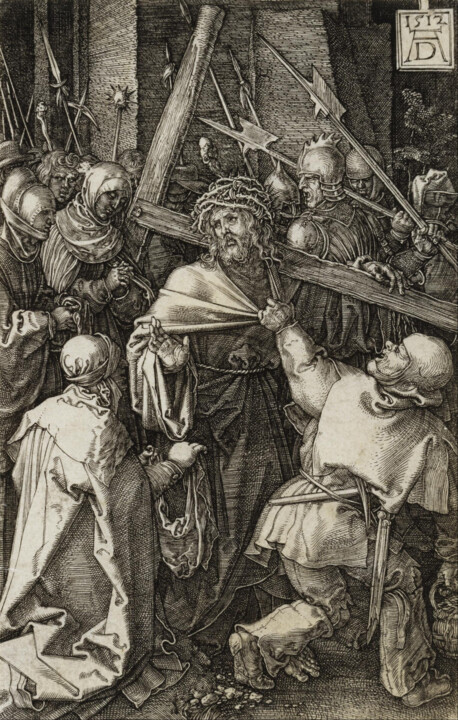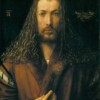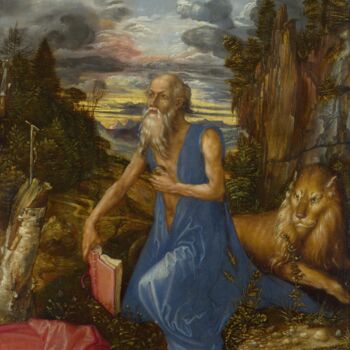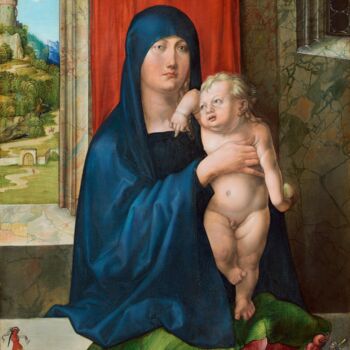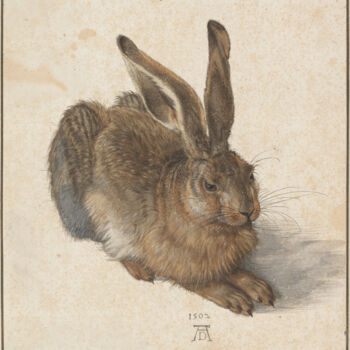Bearing of the Cross (1512) Druckgrafik von Albrecht Dürer
Unverkäuflich
Verkauft von Artmajeur Editions
Dieser Druck ist in verschiedenen Grössen erhältlich.
Verkauft von Artmajeur Editions
-
Original-Kunstwerk
Druckgrafik,
Prägung
- Masse Höhe 4,6in, Breite 3in
- Rahmen Dieses Kunstwerk ist nicht gerahmt
Albrecht Dürer was born on May 21, 1471. He was the third of Albrecht Dürer and Barbara Holper's eighteen children. First, he learned how to make gold in his father's shop. Then, from 1486 to 1489, he learned how to paint from Michael Wolgemut. After that, he went on a journeyman tour that took him to Colmar, Basel, Strasbourg, and other cities along the Upper Rhine. Martin Schongauer had died the year before Dürer went to Colmar, so he didn't get to meet him there. In Basel, Dürer worked in a number of workshops as a draftsman and woodcut carver. He went back to Nuremberg in 1494 and married Agnes Frey, the daughter of a city council member. He also met the humanist Willibald Pirckheimer and became friends with him. In the fall of 1494, he went to Venice for the first time. There, he saw the work of Andrea Mantegna, Antonio del Pollaiuolo, and Giovanni Bellini. In 1495, he became a master and moved back to his hometown. In addition to painting, he worked hard at making prints, which helped him become known as the most famous German artist of his time. From 1497 on, he wrote with the well-known initials "AD." In 1498, he printed the woodcuts for the "Apocalypse" and a few single sheets from the "Great Passion." At this time, he started his theoretical study of human proportions, which would keep him busy for the rest of his life. In 1500, he painted a famous picture of himself (Munich, Alte Pinakothek). He was inspired by Leonardo da Vinci to study the proportions of horses. Around 1503 he took Hans Baldung Grien, Hans Süss von Kulmbach and Hans Schaufelein into his workshop. He went back to Italy again between 1505 and 1507. He painted "The Feast of the Rosary" in Venice at the request of German merchants and Fuggers. In 1508, Dürer went back to Nuremberg and started working on the altarpiece for the Frankfurt merchant Jacob Heller. In 1511, he published the "Great" and "Small" Passion, the "Life of the Virgin," and the "Apocalypse" for the second time. In 1513 and 1514, he made three engravings that are considered his masterpieces: "Rider (Knight, Death, and Devil)", "Jerome in His Study", and "Melencolia I". Emperor Maximilian I's trip to Nuremberg was the start of his work for the emperor. After that came the huge graphic commissions of the "Triumphal Arch" (1515–1517) and the "Triumphal Procession" (1516–1518). In 1514 or 1515, Dürer talked to Raphael. In 1520, he went to the Netherlands. His travel journal and the "Silverpoint Sketchbook" tell a lot about this trip. The "Four Apostles" series (Munich, Alte Pinakothek), which Dürer gave to the Nuremberg city council in 1526, was his last big painting project. It shows a clear acceptance of Protestantism and Martin Luther's ideas. From that point on until he died in 1528, most of his work was about art theory ("Four Books on Measurement," 1525; "Treatise on Fortification," 1527; "Four Books on Human Proportion," 1518, published after his death).
-
Nationalität:
DEUTSCHLAND

- Geburtsdatum : unbekanntes datum
- Künstlerische Domänen: Vertreten durch eine Galerie,
- Gruppen: Zeitgenössische Deutsche Künstler Künstler präsentiert von einer Galerie

